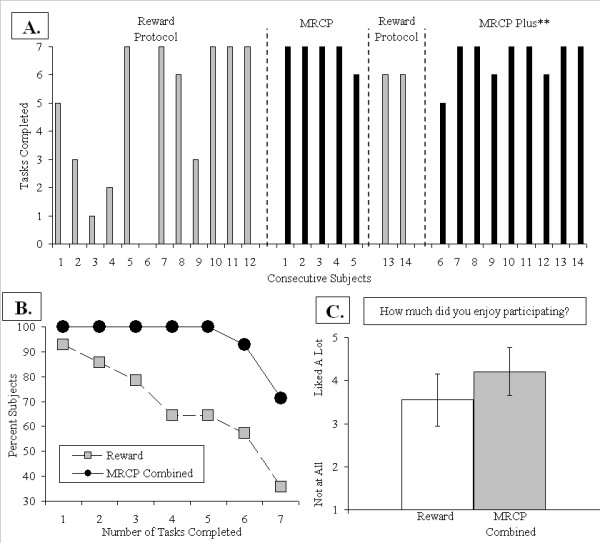Figure 2.

Illustration of improvements in compliance in youths (9-13 years old). Panel A provides a time line of the number of fMRI tasks completed by consecutive subjects. Subjects in the Reward group received a conventional reward-based protocol to encourage compliance that consisted of monetary compensation for participation, customary verbal feedback praise/encouragement, simulator training and exposure to select tasks prior to imaging. Subjects in the multiple reward compliance protocol or MRCP group also received the reward-based protocol along with earning a subject-selected reward following completion of each fMRI task and presentation of a visual progress display (see Figure 1). The duration of three tasks was later shortened in the MRCP Plus** subjects (6-14), which decreased total time of tasks from 66.7 min to 55.9 min. Panel B shows significant differences in tasks completed between Reward and the MRCP Combined group (pooled MRCP and MRCP Plus groups). Panel C shows a slightly more favorable, but not significant, view of the experiment by the MRCP Combined group. Bars reflect standard deviations.
